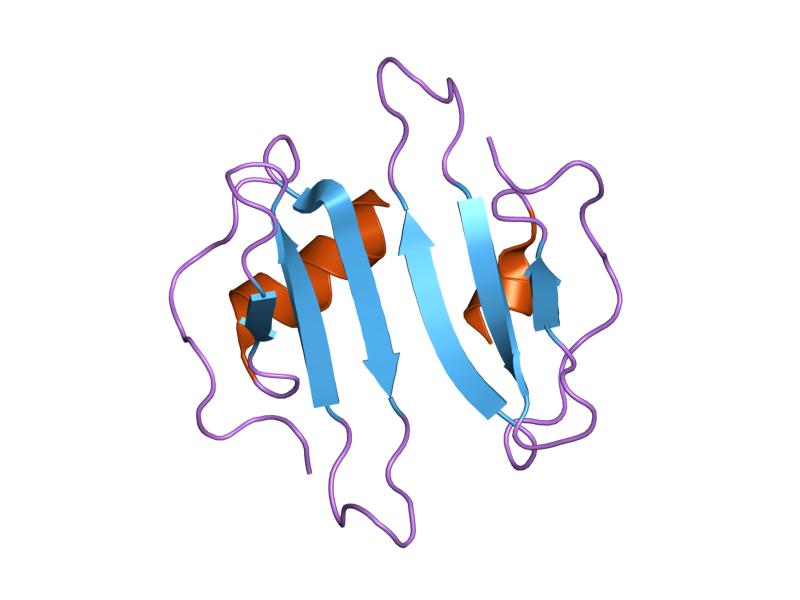Interferon gamma inducible protein 10 (CXCL10)
IP-10 is expressed in many Th1-type inflammatory diseases, where it is thought to play an important role in recruiting activated T cells to sites of inflammation. Although IP-10 has been mentioned as a protein inducible by IFN-γ, other agents including LPS, IL-1α, IL-6, TNF-α, IFN-α and IFN-β were also found to induce IP-10 expression in vitro. In addition, IP-10 mRNA was expressed in IFN-γ knockout mice, confirming that IFN-γ is not absolutely necessary for in vivo IP-10 gene expression. 
Figure This is a structure of IP-10 created using the data from Protein Data Bank (PDB: 1o7z).
IP-10 (CXCL10) is structurally and functionally related to the chemokine MIG (monokine induced by gamma interferon or CXCL9) and IFN-inducible T cell alpha chemoattractant (I-TAC or CXCL11). All three chemokines (induced by IFN-γ) direct migration and stimulate the adhesion of activated T cells and NK cells by activating the same receptor: CXCR3. Experimental data have shown that IP-10/CXCL10, MIG/CXCL9 and I-TAC/CXCL11 exhibit unique expression patterns in several skin diseases, including psoriasis, supporting the concept that all three chemokines have nonredundant functions in vivo. Despite its well-described function to recruit leukocytes to sites of inflammation, IP-10 also plays a role in the generation and function of effector cells. For example, IP-10 increases IFN-γ release from T cells after stimulation with environmental antigens like domestic cat and dust mites antigens (which usually elicit cytokine responses in nonallergic individuals).
Detecting IP-10 (CXCL10) with U-CyTech products
ELISA products
Human IP-10 ELISA
Old World Monkey IP-10 ELISA